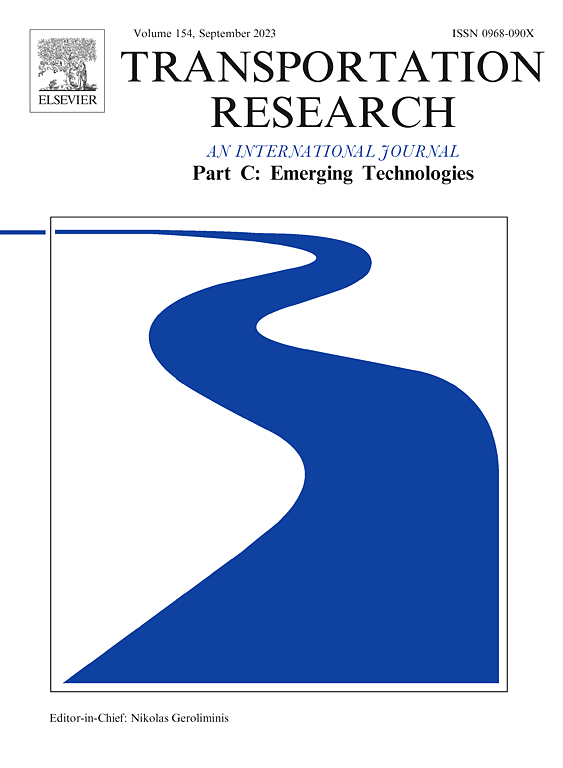A data-driven approach for determining airport declared capacity
IF 7.6
1区 工程技术
Q1 TRANSPORTATION SCIENCE & TECHNOLOGY
Transportation Research Part C-Emerging Technologies
Pub Date : 2025-02-01
DOI:10.1016/j.trc.2025.105012
引用次数: 0
Abstract
Slot-control policies have been widely implemented in congested airports worldwide to manage air transportation demand and airport capacity. These airports, known as slot-coordinated airports or Level 3 airports, provide a certain number of airport slots to airlines. The number of slots in a given time period — for example, 15 min or 1 h — is generally referred to as declared capacity. Only those airlines that obtain airport slots can schedule regular flights at the given airport for the next summer or winter season. Much effort has been made to optimize allocation schemes for the slot coordinator, such that airport slots are distributed to airlines efficiently and effectively. However, few attempts have been made to determine optimal airport declared capacity, mainly because of two challenges. First, the stochastic nature of airport operations due to uncertainty. Second, the unclear relationship between the economic benefits gained by scheduled flights and the possible cost induced by congestion or lost revenue due to unused airport capacity. This paper presents a novel approach for determining airport declared capacity. First, we present a K-medoids-DTW method to cluster airport capacity scenarios and a step-queuing pricing mechanism based on the zero-queuing pricing model to quantify the cost of operations in different time periods of the day. A two-stage stochastic programming model is then developed to determine the number of slots at the airport. A busy international Level 3 airport in Asia is used as a case study to demonstrate the applicability of this model. Our results highlight the advantages of the step-queuing pricing model (SPM) compared with the uniform pricing model (UPM). The SPM allows more slots to be created. Our method can be a useful tool for airport authorities or other related aviation authorities seeking to assign the optimal number of slots at different levels of service.
求助全文
约1分钟内获得全文
求助全文
来源期刊
CiteScore
15.80
自引率
12.00%
发文量
332
审稿时长
64 days
期刊介绍:
Transportation Research: Part C (TR_C) is dedicated to showcasing high-quality, scholarly research that delves into the development, applications, and implications of transportation systems and emerging technologies. Our focus lies not solely on individual technologies, but rather on their broader implications for the planning, design, operation, control, maintenance, and rehabilitation of transportation systems, services, and components. In essence, the intellectual core of the journal revolves around the transportation aspect rather than the technology itself. We actively encourage the integration of quantitative methods from diverse fields such as operations research, control systems, complex networks, computer science, and artificial intelligence. Join us in exploring the intersection of transportation systems and emerging technologies to drive innovation and progress in the field.

 求助内容:
求助内容: 应助结果提醒方式:
应助结果提醒方式:


